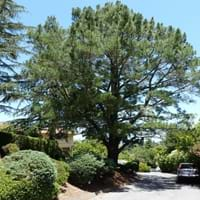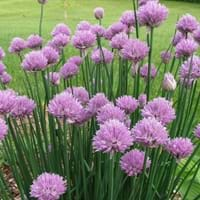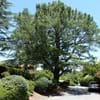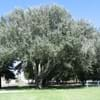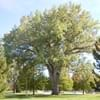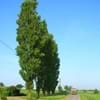Life Span
Perennial
Perennial
Origin
California, Mexico
World/Pandemic, North America, Europe, Asia
Types
Not Available
Common chives, Garlic chives, Siberian garlic chives, Giant Siberian chives
Number of Varieties
Not Available
Habitat
Not Available
Rocky areas
USDA Hardiness Zone
7-9
4-9
Sunset Zone
H1, 8, 9, 14, 15, 16, 17, 18, 19, 20, 21, 22, 23, 24
A1, A2, A3, H1, H2, 1a, 1b, 2a, 2b, 3a, 3b, 4, 5, 6, 7, 8, 9, 10, 11, 12, 13, 14, 15, 16, 17, 18, 19, 20, 21, 22, 23, 24
Habit
Upright/Erect
Clump-Forming
Flower Color
Not Available
White, Pink, Lavender
Flower Color Modifier
Bicolor
Not Available
Fruit Color
Not Available
Black
Leaf Color in Spring
Dark Green
Green, Light Green
Leaf Color in Summer
Dark Green
Green
Leaf Color in Fall
Dark Green
Green, Yellow green
Leaf Color in Winter
Dark Green
Not Available
Leaf Shape
Pinnate
Grass like
Plant Season
Spring, Summer, Fall
Spring, Summer, Fall
Sunlight
Full Sun, Partial Sun
Full Sun, Partial Sun
Growth Rate
Not Available
Medium
Type of Soil
Clay, Loam, Sand
Loam, Sand
The pH of Soil
Acidic, Neutral, Alkaline
Neutral
Soil Drainage
Well drained
Well drained
Bloom Time
Not Available
Late Spring, Early Summer
Tolerances
Drought
Not Available
Where to Plant?
Ground
Ground, Pot
How to Plant?
Stem Planting
Seedlings, Transplanting
Plant Maintenance
Medium
Medium
Watering Requirements
Allow soil to be completely dry in between waterings, Requires watering in the growing season, Water less during winter
Requires regular watering, Water every two or three days during warmer months, Water when soil is dry
In Summer
Lots of watering
Lots of watering
In Spring
Moderate
Moderate
In Winter
Average Water
Average Water
Soil pH
Acidic, Neutral, Alkaline
Neutral
Soil Type
Clay, Loam, Sand
Loam, Sand
Soil Drainage Capacity
Well drained
Well drained
Sun Exposure
Full Sun, Partial Sun
Full Sun, Partial Sun
Pruning
Prune in late summer or fall, Remove dead or diseased plant parts
Prune in spring, Prune in summer, Prune to stimulate growth, Remove deadheads
Fertilizers
very little fertilizers at a time
All-Purpose Liquid Fertilizer
Pests and Diseases
Monterey pine midge, Monterey pine needleminer, Monterey pine scale, Monterey pine shoot moth, Monterey pine tip moth, Monterey pine weevil, Needle rust, Needlecast disease, Pine needle scale, Pinewood nematode, Pitch canker, Red blotch, Red turpentine beetle, Root rot, Spider mites, Western gall rust
Bacterial leaf spot, Damping-off, Downy mildew, head rot, Pink Root, Rust, Thripes
Plant Tolerance
Drought
Drought
Flower Petal Number
Not Available
Single
Fragrant Bark/Stem
Yes
Yes
Foliage Texture
Fine
Fine
Foliage Sheen
Matte
Matte
Attracts
Not Available
Not Available
Allergy
Asthma, Respiratory problems, Skin irritation
Asthma, Diarrhea, Itchiness, Pain and fatigue, Skin rash
Aesthetic Uses
Showy Purposes
Not Used For Aesthetic Purpose
Beauty Benefits
Not Available
Not Available
Environmental Uses
Air purification, Shadow Tree
Air purification
Medicinal Uses
Not Available
Antioxidants, Bone strength, Improve heart health, Nutrients
Part of Plant Used
Sap, Wood
Leaves, Seeds
Other Uses
used for making roof trusses, poles, joists, piles, Used for woodware, Used in construction, Used in Furniture
Employed in herbal medicine, Used As Food
Used As Indoor Plant
No
Yes
Used As Outdoor Plant
Yes
Yes
Garden Design
Feature Plant, Screening / Wind Break, Shade Trees
Alpine, Cutflower, Edible, Herb / Vegetable, Mixed Border, Rock Garden / Wall
Botanical Name
PINUS radiata
ALLIUM schoenoprasum
Common Name
Monterey Pine
Chives, Cultivated Chives, Garden Chives
In Hindi
मोंटेरी पाइन
Chives
In German
Monterey-Kiefer
Schnittlauch
In French
Monterey Pine
Ciboulette
In Spanish
El pino de Monterrey
Cebollino
In Greek
Monterey Pine
βολβοί φαγώσιμοι
In Portuguese
Monterey Pine
Cebolinha
In Polish
Monterey Pine
Szczypiorek
In Latin
Pine
Sectivi porri
Phylum
Pinophyta
Spermatophyta
Class
Pinopsida
Liliopsida
Order
Pinales
Asparagales
Family
Pinaceae
Liliaceae
Clade
Not Available
Angiosperms, Monocots
Tribe
Not Available
Not Available
Subfamily
Pinoideae
Allioideae
Number of Species
Not Available
Not Available
Season and Care of Monterey Pine and Chives
Season and care of Monterey Pine and Chives is important to know. While considering everything about Monterey Pine and Chives Care, growing season is an essential factor. Monterey Pine season is Spring, Summer and Fall and Chives season is Spring, Summer and Fall. The type of soil for Monterey Pine is Clay, Loam, Sand and for Chives is Loam, Sand while the PH of soil for Monterey Pine is Acidic, Neutral, Alkaline and for Chives is Neutral.
Monterey Pine and Chives Physical Information
Monterey Pine and Chives physical information is very important for comparison. Monterey Pine height is 2,440.00 cm and width 300.00 cm whereas Chives height is 203.00 cm and width 15.20 cm. The color specification of Monterey Pine and Chives are as follows:
Monterey Pine flower color: Not Available
Monterey Pine leaf color: Dark Green
Chives flower color: White, Pink and Lavender
- Chives leaf color: Green and Light Green
Care of Monterey Pine and Chives
Care of Monterey Pine and Chives include pruning, fertilizers, watering etc. Monterey Pine pruning is done Prune in late summer or fall and Remove dead or diseased plant parts and Chives pruning is done Prune in spring, Prune in summer, Prune to stimulate growth and Remove deadheads. In summer Monterey Pine needs Lots of watering and in winter, it needs Average Water. Whereas, in summer Chives needs Lots of watering and in winter, it needs Average Water.
